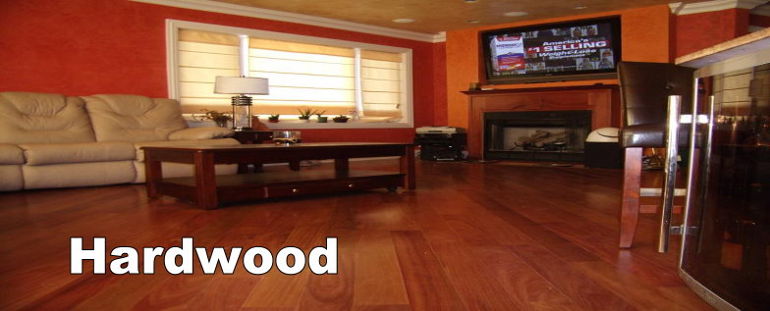
1.HARDWOOD FLOOR CONSTRUCTION
Understanding how hardwood floors are constructed will help you choose the right material, make you a smarter shopper and keep you within the borders of your decorating budget.
Solid Hardwood Floor-Are a solid piece of hardwood cut into wood planks that are generally 3/4″ thick. It is available in unfinished and prefinished.
Unfinished wood flooring -Is a product that must be job-site sanded, stained if desired, and finished after installation. A 3/4″ thick unfinished strip floor can be sanded from four to six times in it’s lifetime.
Pre-finished-Wood flooring is factory sanded and finished that only needs installation. This wood floor product comes in many colors, species and sizes. This application ensures minimal dust as no sanding will be needed.
Hardwood sizes-Solid wood flooring is produced in:
Strip – in thickness of 1/2″ or 3/4″ in widths of 1-1/2, 2″ and 2-1/4″
Plank – in thickness of 1/2″ or 3/4″ and widths of 3″ to 8″
Parquet – geometrical patterns composed of individual wood slats held in place by mechanical fastening or an adhesive.
The strips and planks are generally in random lengths from 12″ – 72″.
2.HARDWOOD FLOOR DURABILITY
While there are many factors to consider when choosing your hardwood flooring, durability is definitely one to think about. A popular choice is red oak, such that it has become a benchmark in measuring. Each hardwood species and type has it’s own characteristics and strength.
Janka is a test that measure the hardness of the wood. The test measures the force required to push a steel ball with a diameter of 11.28 millimeters (0.444 inches) into the wood to a depth of half the ball’s diameter.
The higher the number, the harder the wood. Although this is one of the best methods to measure the ability of wood species to withstand indentations.
3.TYPES OF WOOD FLOOR FINISHES
Most factories are applying 5-10 coats of a ultra-violet (UV) cured urethane. This type of finish can not be duplicate on a job site finish. The UV cured urethane wood finishes do make these floors very easy to maintain .
Pre-finished hardwood finishing offers you these choices:
UV-cured – Factory finishes that are cured with Ultra Violet lights .
Polyurethane – A clear, tough and durable finish that is applied as a wear layer.
Acrylic-urethane – A slightly different chemical make up than Polyurethane with the same benefits.
Ceramic – Advanced technology that allows the use of space-age ceramics to increase the abrasion resistance of the wear layer.
Aluminum Oxide – Added to the urethane finish for increased abrasion resistance of the wear layer
Acrylic Impregnated –Acrylic monomers are injected into the wood cell structure to give increased hardness and then also applied on top of the planks
Job-site hardwood floor finishing methods include:
Water Based Urethane – Water is used as part of the chemical make up of the polyurethane finish.
Solvent Based Urethane – Oil is used as part of the chemical make up of the polyurethane finish.
Moisture Cured Urethane – A similar chemical make up as solvent based urethane, but this finish needs the humidity (moisture) in the air to cure.
4.THINGS TO KNOW
Expect some dust when finishing.Because your floor is being finished on site, you need to know that your final product can’t be “dust free”. It’s not possible to create a “dustless” environment and some dust will fall onto the wet topcoat of the polyurethane finish.
Sanding marks, small bubbles and brush marks will possible show up.
The grain pattern is determined by the species and how the wood is cut.
Variations in the color and grain are normal and they create the beautiful and unique look of a wood floor.
Wood moves-Wood floors will expand and contract due to moisture and temperature changes.
In dry climates, you may want to consider using a whole house humidifier to help minimize the shrinkage and cracking of the wood .
Sub floors issue-Because the sub floors are not perfectly level, when walking on your new hardwood floor you may hear hollow sounds (where your sub-floor surface has dips and ridges).
Hollow sounds are normal and are not considered a product or installation defect.
Change of color-Because of traffic and exposure to sunlight hardwood floor will darken, fade or change shade over time.
5.PREFINISHED VS ON-SITE FINISHED
Pre-finished hardwood flooring advantages:
Easy to install
Reduce the cost of labor, because no sanding is necessary
No sanding dust
Also because of the multiple coats of finish, pre-finished wood flooring has a very durable wear layer, and the finish itself is under warranty by the manufacturer.
Pre-finished hardwood flooring disadvantages:
Pre-finished can traps dirt and be very hard to clean between the cracks, since the cracks are not sealed at the job site. Solid site finished flooring is sanded and sealed at the job site.
When refinishing pre-finished flooring, it is necessary to remove a lot more wood to get a level floor, so in effect you are losing more wood
A pre-finished floor will maintain height irregularities of the substrate. In short, a bump in the sub floor means a bump in the pre-finished floor unless the sub floor is fixed first. Site finished flooring is sanded flat, so is more forgiving of slight irregularities or slight height variations.
If the pre-finished floor gets damaged, it means ripping out a whole section of flooring and completely replacing it, to correct it, whereas site-finished hardwood flooring can, in most cases, be easily fixed with a quick sanding and finish.

